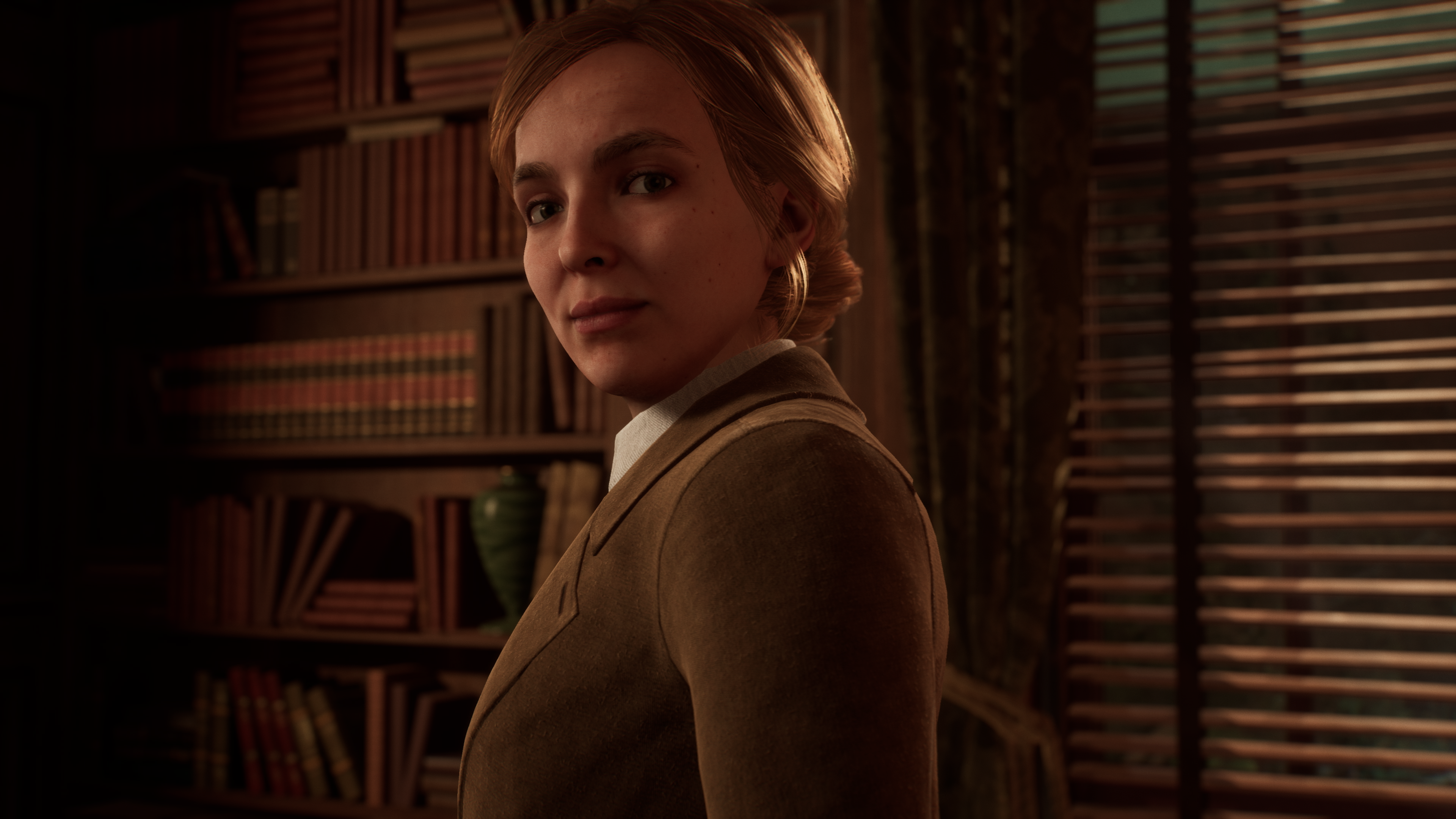Alone in the Dark is a self-referential gothic noir, bringing horror remakes full circle
Preview | Imagine LA Noire, but you're stuck in Spencer Mansion

Mark your calendars – it's time to return to Derceto Manor. Alone in the Dark, THQ Nordic's remake of the cult classic scare 'em up, is set to launch later this year on October 25. Set in the deep south of 1920s USA, the direct reimagining is a "love letter" to the 1992 original, building upon its atmosphere to bridge the gap between gothic noir and survival horror. With major Hollywood actors starring as Detective Edward Carnby and Emily Hartwood, the emphasis on cinematics and historical context alone is already a huge leap from Nordic's first stab at it. The studio only acquired the IP from Atari in 2018, but its modern day take on Alone in the Dark launched back in 2008 and still sports mixed reviews on Steam to this day.
Stranger Things and Killing Eve stars aside, though, what really stands out to me is the newest game's proud acknowledgement of its place in genre history. Alone in the Dark is a remake in some ways influenced by the remakes of a game franchise that was influenced by its original title. We're firmly in the midst of a glittering horror remake renaissance, and Alone in the Dark doesn't shy away from its self-referential nature.
Spider-Man pointing at himself.gif


Which remake which is better: Resident Evil 2 or Resident Evil 4? We argue a case for each.
When it comes to survival horror, 1992's Alone in the Dark pretty much wrote the book. Its fixed camera angles from dramatically differing perspectives became a genre mainstay, obscuring just enough of our vision to make vast buildings feel claustrophobic and enemies less easy to spot within them. But the genre has come a long way in the last 30 years, and Alone in the Dark has an extra-complex task: remaking a cult classic game, and adapting it to suit the new standards of the genre it gave birth to. It proves the cyclicality of horror remakes today, one feeding into the other until they eventually eat their own tails.
During my hands-off preview of the announcement, I learned that Alone in the Dark shares a similar premise to the original: tormented by a malevolent entity that plagues the whole family, known to them as the Hartwood Curse, Jeremy Hartwood checks himself into a gothic mansion-turned-countryside hospital somewhere in the American south. After sending a worrying letter to his niece, Emily, she hires Detective Carnby to investigate her uncle's case and visit him at Derceto Hospital to find out more. Think of the slick, period-specific stylistic touches of LA Noire here, only scarier.

It's not an exact point-for-point retelling of the 1992 original, but the developer has evident respect for both the Alone in the Dark IP and its unique duties as a remake. Retconning elements of the narrative gives THQ Nordic an opportunity to share some "almost postmodern reflections on the nature of remakes", the studio says, with "the question of whether history is doomed to repeat itself being very much on the developers' minds."
Still, Nordic is proud of its strong links to the source material, and, having been given the blessing of original game creator Frédérick Raynal, this year's game is even complete with throwback references, easter eggs, and a pre-order-only costume pack that lets you reskin Emily and Edward to look like their 1992 models. In a year that has been so horror-heavy already, though, it's hard to look at the gameplay footage and not think of one franchise in particular.
Dad in son's clothing

Alone in the Dark has an extra-complex task: remaking a cult classic game, and adapting it to suit the new standards of the genre it gave birth to.
With two playable characters even back in the 90s, Alone in the Dark had set the scene for some of the best Resident Evil games and their branching narratives. These would receive even greater nuance in subsequent remakes, with Resident Evil 2 remake kicking off the trend in 2019.
Weekly digests, tales from the communities you love, and more
Swapping out the Alone in the Dark-influenced fixed camera angles for over-the-shoulder third person perspectives, Capcom had worked out such a fine way to balance horror and action gameplay elements that it quickly became an industry standard – and THQ Nordic has no choice but to take a leaf from that same book.

"When developing the game we took most of our cues from the 1992 original and tried to preserve as much as possible while still making it a modern experience," Nordic says. "This modernization goes hand in hand with, for instance, an over-the-shoulder-camera and a control scheme that has become standard."
The Spencer Mansion as seen in 1996's Resident Evil would have looked very different if not for Alone in the Dark, should the franchise have existed in the same shape at all. But with THQ Nordic's remake clearly influenced by the third-person evolution of its own child genre, thanks to new-gen remakes of games that came soon after the original, the self-eating Ouroboros serpent is a fitting symbol for Alone in the Dark for more reasons than its Resident Evil 5 connotations.
The third-person perspective might not be a direct nod to Capcom's own franchise, but it's interesting to see the form of survival horror feeding back into itself as studios strive to bring classic stories to modern audiences. It begs the question of if there is even any room for a new survival horror IP, or whether the snake is happy to much on its own tail for some time more.
Missed the PlayStation Showcase 2023? Don't worry, we've outlined some newly-announced upcoming PS5 games to keep an eye on.

Jasmine is a staff writer at GamesRadar+. Raised in Hong Kong and having graduated with an English Literature degree from Queen Mary, University of London in 2017, her passion for entertainment writing has taken her from reviewing underground concerts to blogging about the intersection between horror movies and browser games. Having made the career jump from TV broadcast operations to video games journalism during the pandemic, she cut her teeth as a freelance writer with TheGamer, Gamezo, and Tech Radar Gaming before accepting a full-time role here at GamesRadar. Whether Jasmine is researching the latest in gaming litigation for a news piece, writing how-to guides for The Sims 4, or extolling the necessity of a Resident Evil: CODE Veronica remake, you'll probably find her listening to metalcore at the same time.


